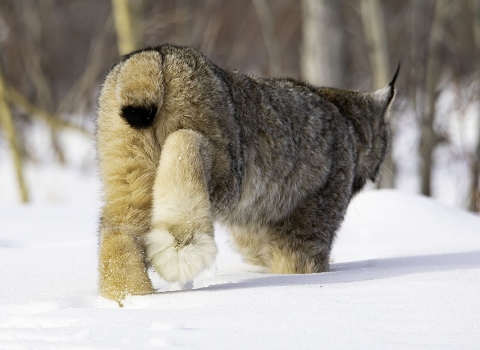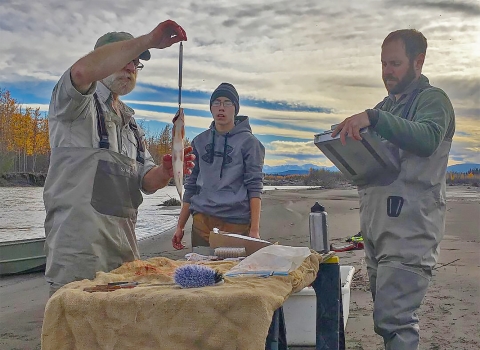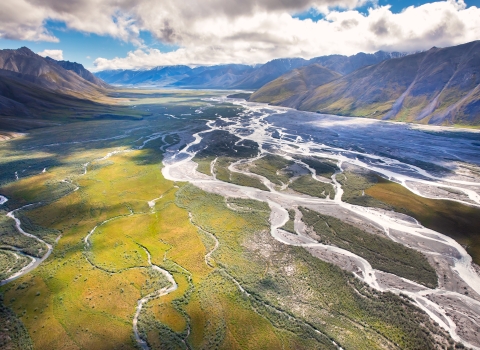Projects and Research
The Northwest Boreal Forest Lynx Project is a collaborative effort between the U.S. Fish and Wildlife Service, the University of Alaska Fairbanks, and the National Park Service to study movement patterns, dispersal behavior, and survival of lynx in relation to snowshoe hare abundance.
Canada lynx populations depend on snowshoe hare as their primary prey. Hare populations are...
Humpback Whitefish are an important subsistence fishery resource for local communities within the upper Tanana River drainage. Community members have expressed concerns to Tetlin National Wildlife Refuge staff on perceived declines in size and abundance of Humpback Whitefish in the area. To address these concerns, we conducted a study to evaluate demographic changes in local spawning...
Invasive Species Program staff collaborate with Alaska's National Wildlife Refuge, the State of Alaska and other partners to protect Alaska's lands and waters by working to detect invasive species infestations while they’re still relatively small and have the highest chance of being successfully eradicated. We survey terrestrial, freshwater, and marine environments for invasive plants and...
Preserving water quality is one purpose of every National Wildlife Refuge in Alaska. Land cover and use can affect the water quality of rivers, lakes and other surface waters. Potential sources of point- and non point-source pollution, such as communities and resource development projects, can threaten refuges' waters. Baseline water quality data provide a benchmark for identifying and...
As part of the National Wetlands Inventory, we are mapping and digitizing high priority wetlands in Alaska’s 16 National Wildlife Refuges.
The U.S. Fish and Wildlife Service is the principal federal agency tasked with providing public information on the status and trends of our Nation's wetlands. Our National Wetlands Inventory provides detailed information...




